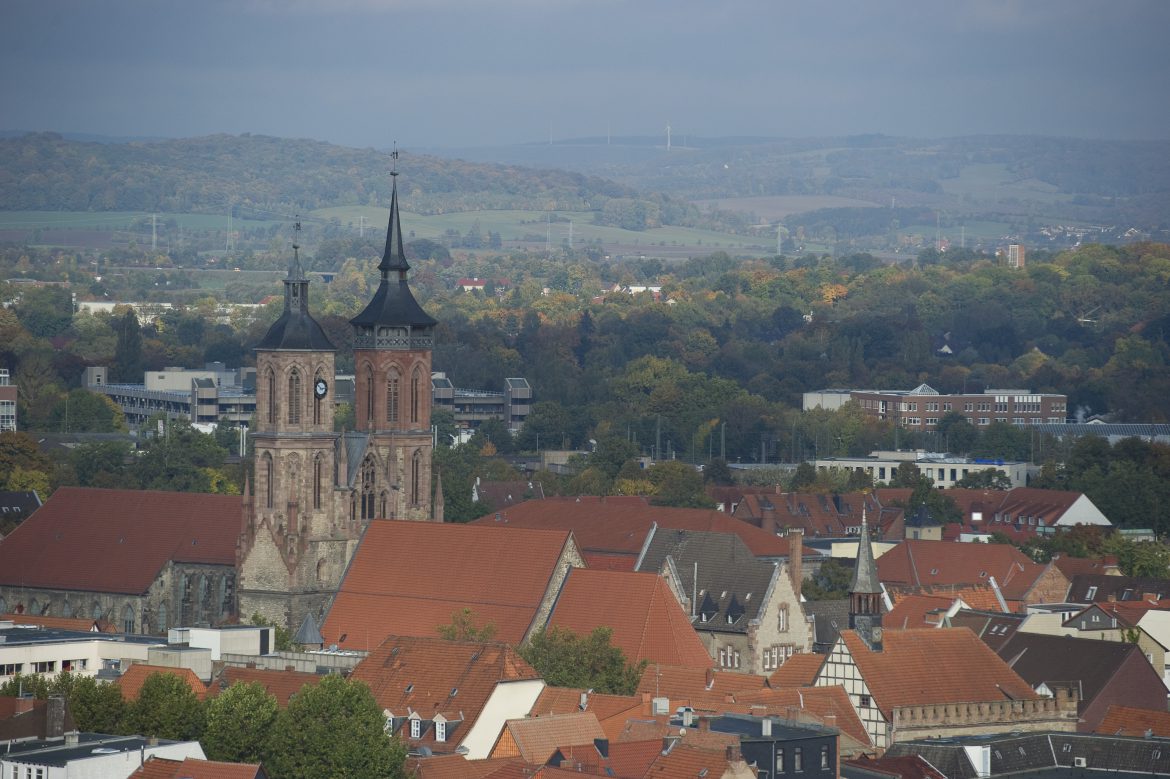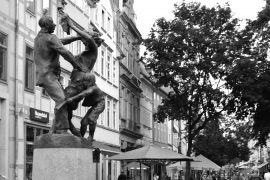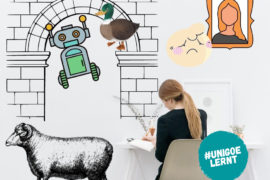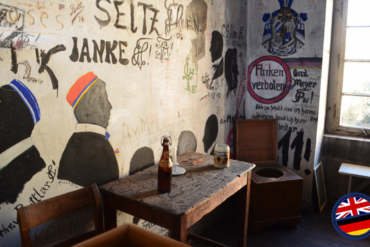A shared flat, a single apartment, student dorm, with mum and dad, with or without a balcony, with a dish washer, in the basement, with a garden, in the city center, in Weende, Ostviertel or Südstadt. There are many different student accommodation options in Göttingen. Until 2001, one of them was trully extraordinary: the student flat in the northern tower of the St. Johannis Church. For eighty years, students of Göttingen University lived there under the address Johanniskirchhof 1.
Until 1921, Göttingen’s tower keeper inhabited the flat, 65 meters or 238 steps over the solid ground. After that, the students moved in.
“Everybody liked to visit. But nobody wanted to live there”, Jürgen Bartz laughs. “I think I have never had as many visitors as I had back then.” Bartz and his flatmate were the last students to live in the tower keeper’s flat before it had to be vacated for renovation in 2001. Until then, he spent his years in the church tower living between ancient beams and antique wallpaper from the early 20th century.
For Bartz, it was like “living in history”. The tower keeper’s flat had seen a lot of it: the original tower keepers were succeeded by a fraternity called “Deutsch-Akademische Gilde” before the Nazi-German SS urged them to leave in 1937. After the Second World War, the fraternity didn’t return to the tower. In the following years, the flat above the city center was occupied by a variety of institutions and people, ranging from the youth movement “Akademische Freischar” to fellows of a protestant charity and finally to Jürgen Bartz. His favourite thing about living in the church tower? “The feeling of being at a special place. With its own special charm and look”, says Bartz. “Sitting on the balcony and having a unique view over the entire city…”
However, not only the location and history of the of the tower keeper’s flat made it a special experience to live there: like all students that came before them, Bartz and his flatmate didn’t have to pay a single penny for rent. In return, they had to open their flat for visitors every Saturday. Half of the entrance fee went to the occupants of the tower. “Living with income”, what Bartz calls it. For him, the weekly visits by strangers have never been annoying: “Being in contact with people has always been fun. We had a lot of nice conversations, even with international visitors.” The alternative to paying the entrance was to carry a 10-litre water barrel up the stairs. “When we were broke, we would carry the water up ourselves”, remembers Bartz. Anyway, the barrels had to be brought up at some point: until 2001, there was no running water in the church tower. Toilet and hygiene sessions had to be conducted at “Gemeindehaus” opposite the church. Even that didn’t pose a problem to Bartz: “You get used to it pretty fast. After a while you just take it for granted.”
In 2001, it was not possible to live in the flat above Göttingen’s rooftops anymore: the towers of the Johannis church needed major reconstruction. The occupants of the north tower had to move out. For Bartz, it was “very tragic” to leave his flat. In 2005, Bartz and the Johannis church community had to take another hit: during the reconstruction works, the tower fell victim to arson. At that time, Bartz had already been living in a “normal” flat in Göttingen for several years, “Even before the fire fighters arrived, I got a call from a friend saying ‘Your flat is on fire’”.
Today, the tower keeper’s flat is open for visitors again. Bartz, too, has already visited his tower. But it has changed since the time he lived up there. “It is a tranquil place now, but the flat has lost its historic character. You cannot feel the history anymore.”








